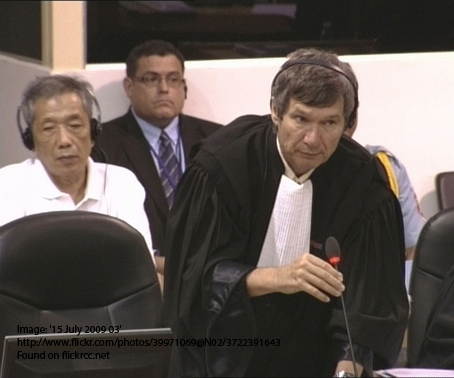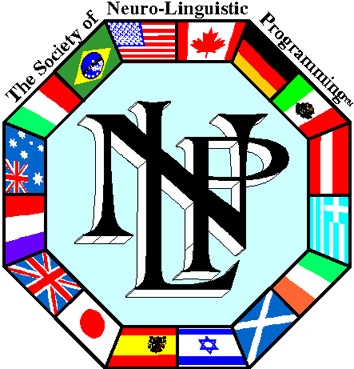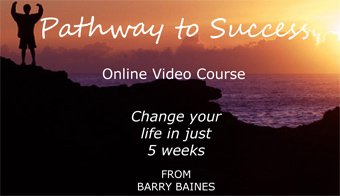Friendly persuasion
NLP techniques
The secret of friendly persuasion is to begin as you mean to go on. By that, I mean find out what you have in common with the other party and talk about things with which you agree.
The more you agree about at the outset, the more you will agree about later on.

The art of pleasing consists in being pleased
William Hazlitt
Saying Yes
Do all you can in your early discussions to get the other person to say Yes because the word No is difficult to get past.
Your chances of achieving that will be much greater if you talk, and keep talking, on the same wavelength.
Body language
Being careful all the time not to stare, observe carefully his body language. Watch particularly in which direction his eyes go.
All the time you are talking, you are each making pictures in your mind. So if he is agreeing with you, he is making good pictures.
Where is he looking? Is it up to the right, down to the left, sideways?
If you are skilful enough to obtain a Yes answer on several occasions, you will observe consistency in both the body language and where he sees his pictures.
Friendly persuasion – the difficulty with No
The principal difficulty with a No answer is that once it has been delivered it is difficult to retreat from. Pride starts to get in the way.
It is as if the feet get stuck in the mud and to attempt to extract them at this stage would be far too difficult.
A Yes answer, on the other hand, has a forward movement to it. When cross-examining a witness whose main testimony is disputed, it is always best to start off by verifying undisputed facts and start to move subtly into the disputed territory:
(Q) “It is right, isn’t it, that you have known the defendant since you were children? (A) “Yes." (Q) “And it is also true to say that you started work together at the same engineering firm when you were 18 years old?” (A) "Yes." (Q) “So you are very familiar with his general character?” (A) “Yes.” (Q) “It would be out of character, wouldn’t it, for him to have committed the sort of dishonest crime that is now alleged against him?” (A) “Yes, I suppose it would.”
Friendly persuasion – avoiding the blunderbuss
That simple demonstration shows how powerful this technique can be. The blunderbuss approach is much too unsophisticated.

If the advocate had gone straight in with the question: “This defendant just wouldn’t have stolen the goods you now allege he took?” what sort of response do you think he would have received? The more softly you tread, the further you are likely to get.
Now it may be that you believe the person you are trying to persuade is talking tommyrot. Don’t interrupt him. Don’t ridicule or condemn him.
Instead, try to understand the approach he is taking. However misguided or inaccurate he may be, he is (like you) trying to do the best for himself.
So listen to him carefully and treat him with respect. When you can, steer him onto a topic you know you can agree about so that you can gain his trust.
Friendly persuasion – advance consideration
If you know you are going to enter into a negotiation or you have some persuading to do in a family or business situation, you would do well to think carefully about it in advance.
I don’t mean by that that you should think only about what you are going to say and the arguments you may wish to make in support of your own case; consider what the other person is likely to say in response.
Perhaps you are saying to yourself now, “How can I possibly know what is in his or her mind?”
Of course, you cannot take the top off someone else’s head and look inside, but you will probably know something about the situation you wish to discuss already.
You must have an idea of the sort of arguments the other person is likely to make.
It is another mark of a good advocate to know what the opposition is likely to say.
When I am reading the witness statements in a case I am about to prosecute, as I do so I am constantly asking myself, “If I were to defend this person what would I be likely to ask this witness? How would I challenge this evidence?
"How would I try to diminish it in the eyes of the court?”
Friendly persuasion – knowing the arguments
When I have finished reading the witness statements, reviewing the charges against the defendant and checking the applicable law, I next ask myself: “What legal arguments would I present to obtain an acquittal for this defendant?
"What legal submissions might I make in the course of the case to get certain evidence excluded? What might I say in my final speech to the court or jury?”

If you bother to take that approach, you are much less likely to be surprised on the day. You have also thought about the responses you will make when you are challenged?
Furthermore, you learn in advance to be sympathetic and responsive to the other side’s point of view even if you don’t actually agree with it.
It enables you not only to give advance consideration to the debate but also to reconsider your own position and determine if you are really coming from a position of strength.
It enables you not only to give advance consideration to the debate but also to reconsider your own position and determine if you are really coming from a position of strength.
Friendly persuasion – the third way
As a court advocate I am able to say to my opponent when I meet him prior to trial, “I have looked at the interviews, and it seems to me that some of the questions and answers are not only prejudicial to your client but arguably inadmissible.
I am happy to agree to omit them at this stage.” That prevents me losing a silly argument before the judge and giving my opponent an early advantage.
In any other negotiation or argument, I suggest you adopt the late Dr Stephen Covey’s third way: work together for a solution which will have no winner and no loser; work for a solution which does not benefit you at the expense of the other party, or that benefits the other party at your expense; work instead for a solution that benefits you both. In that way you are both winners.
Gain FREE access to my self-confidence video
To gain free access to my self-confidence video enter your email address and first name in the box below. This will also keep you up-to-date with my free newsletter Inspirations.
As a bonus for subscribing you'll receive the first three chapters of my book Towards Success, where you can learn more about NLP techniques, from Anchors to Modelling, and my 50 favourite inspirational quotations.
Return from Friendly persuasion to
The Secret of Mindpower & NLP Home
Return to Site Search & Contents Page

Change your life in just 5 weeks
Discover the pathway to success with my online video course. Learn more

Download NEW ebook Your Genius Within and find out how to uncover your own inner genius

NLP Articles
- Anchors
- Anchors explained
- Anger Management tips
- Anxiety Panic Attacks
- Beating disappointment
- Beating drug addiction
- Best self-help book
- Big events
- Body control module
- Body language attraction
- Body language flirting
- Body language in communication
- Body language interpretation
- Body language of a liar
- Body language signs
- Boost self-confidence
- Building Rapport
- Changing bad habits
- Changing beliefs
- Changing States
- Children
- Christmas (Holidays)
- Christmas & New Year greetings
- Chronic pain management
- Conquering Fear
- Crohn's Disease
- Cure for a Phobia
- Deal with your fear
- Deletion
- Determining your destiny
- Developing your senses
- Disaster to Triumph
- Distortion
- Drawing the line
- Embedded Commands
- Enthusiasm
- Exams
- Expecting the Best
- Expert Relationship Advice
- Eye accessing cues
- Fear of driving
- Fear of elevators
- Fear of flying
- Fear of the dentist
- Fear of vomiting
- Fear, Mental Blocks & Hesitation
- Fear, Uncertainty and Doubt
- Fight or flight response
- Finding Solutions
- Forever Worried?
- Friendly persuasion
- Generalisation
- Get the life you want
- Getting lucky
- Getting over your past
- Goal Setting Tips
- Goal Setting Tools
- Goal Setting Tools, More
- Great self-help books
- Grief
- Happy retirement
- Healthy Mind
- High blood pressure
- How long will I live?
- How to be lucky
- How to read body language
- Hypnosis & NLP
- Hypochondria
- Imagining perfect performance
- Improving speed reading
- Instant Mood Lift
- Interviews
- Knowing yourself
- Learn NLP
- Life Values
- Maintaining weight loss
- Make you thin
- Making it happen
- Managing change
- Meddling Mom
- Meeting People
- Mental rehearsal techniques
- Meta Model
- Metaphor
- Modelling
- Modelling Genius
- More NLP techniques for weight loss
- NLP Books
- NLP Courses
- NLP Practitioner Course
- NLP Master Practitioner Course
- NLP Secret
- NLP jargon buster
- NLP Modelling helped me
- OCD symptoms
- OCD treatment
- Overcoming low self-esteem
- Overcoming stage fright
- Pacing & Leading
- Persuasion
- Presuppositions
- Presuppositions (2)
- Problem solving
- Public Speaking
- Reaching agreement
- Reframing
- Self-confidence
- Self limiting beliefs
- Self-image
- Sportsmen Guide
- Stage fright tips
- Stammering
- States
- Stop binge eating
- Stop Smoking
- Subliminal Persuasion
- Success Principles
- Techniques for persuasion
- Techniques for weight loss
- The meaning of NLP
- Time & NLP
- Towards
- Towards & Away
- Ulcerative colitis
- Weight Loss
- Weight loss techniques
Articles on HYPNOSIS:
- Big events
- Conversational Hypnosis
- Covert hypnosis
- Deepening self-hypnosis
- Depression Hypnosis
- Handshake interrupt
- How to do self-hypnosis
- How to hypnotise your audience
- Hypnosis and Weight Loss
- Hypnosis NLP
- Hypnosis: Right or Wrong
- Hypnosis Stories
- Hypnotic language
- Hypnotism Stories
- Hypnosis story for you
- Hypnosis to quit smoking
- Instant self-hypnosis (age regression)
- Practical self-hypnosis
- Self-Hypnosis
- The Milton Model
Articles about THE SECRET of:
- Abundance Mentality
- Achieving more
- Beating Domestic Violence
- Being bothered
- Being Happy
- Best Self-help Book
- Conquering road rage
- Coping with criticism
- Dealing with pride
- Defeating stress
- Discover the secret of wealth
- Genius
- Getting off to sleep
- Getting over a break up
- Getting over your temper tantrum
- Health
- How to deal with grief
- Imagination
- Influence
- Love
- Making Money
- Managing others
- Memorising a Deck of Cards
- Memory
- My Success
- Organising Memory
- Overcoming tiredness
- Overcoming worry
- Perpetual energy
- Remembering
- Secret Law of Attraction books
- Sleeping well
- Speed Reading
- Super Memory
- Surviving a recession
- Surviving negativity
- The Secret Law of Attraction
- Towards
- Teachers of the Secret
- Waiting for God
- Wealth Building
- Weight Loss
Articles about COACHING:
- Barriers to effective communication
- Communication
- Executive Business Coaching
- Feedback
- Free interview tips
- Free Life Coaching
- Goal Setting Tips
- Goal Setting Tools
- Goal Setting Tools, More
- Life & Executive Coaching
- Personal Development Plan
- Problem solving
- Success Principles
- The Secret of my Success
- Time Management
Articles on GENIUS and MIND POWERS:
- Activating genius
- Become a genius
- How long will I live?
- Mind Powers
- Misty Reflections
- Modelling Genius
- The Secret of Genius
Articles about MEMORY:
Articles about RELATIONSHIPS:
- Beating domestic violence
- Body language flirting
- Expert relationship advice
- Healthy family relationships
- Hurt feelings
- Love
- Relationship problem advice
- Signs of true love
- The secret of getting over a break up
Articles on WEALTH:
Articles on WEIGHT LOSS:
- Best Weight Loss Plan
- Body control module
- Easy weight loss
- Hypnosis and Weight Loss
- Maintaining weight loss
- More NLP techniques for weight loss
- NLP techniques for weight loss
- NLP techniques to make you Thin
- NLP weight loss techniques
- Stop binge eating
- The Secret of weight loss
- Weight control help
- Weight loss tips
- Why have I lost weight?
Articles on SECRET and INSPIRATIONAL TEACHERS:








New! Comments
Have your say about what you just read! Leave me a comment in the box below.